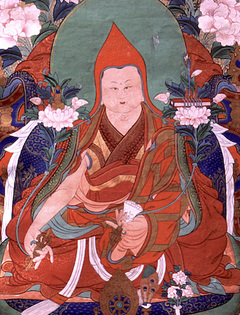Compendium of Sādhanas
English (45) | Deutsch (7) | Español (44) | Français (25) | Português (2) | Italiano (5) | Nederlands (3) | 中文 (3) | བོད་ཡིག (45)
Texts belonging to (and related to) the Compendium of Sādhanas (sgrub thabs kun btus), a collection originally compiled by Jamyang Khyentse Wangpo (1820–1892) and later supplemented by Jamyang Loter Wangpo (1847–1914). Note that the volume numbers below correspond to the fourteen-volume Derge edition (reproduced by Dzongsar Institute):
